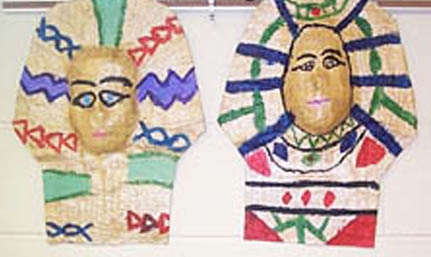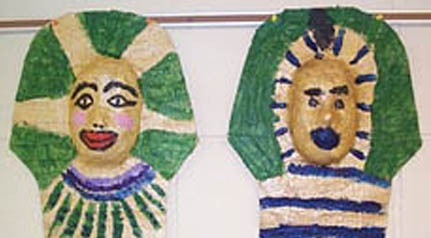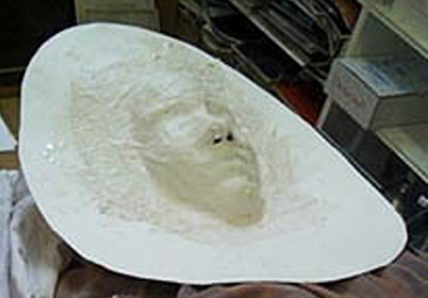
This was one of the very first projects I posted when the original Art-Rageous website was launched in 1999, and at the time mask-making was geared for students in grades 5-8. We started out using medical grade plaster gauze, but then found larger quantities available that were designed for arts and crafts projects. Below you will find step-by-step instructions on how to create a mummy mask for art, school, or decorative projects related to ancient Egypt.
Grade Level:Elementary (with assistance) through High School
Materials:
Plaster gauze, cut into strips of varying lengths and widths
Poster board
Scissors
Pencil
Bowl, water (warm water is best, but cold works, too)
Paper towels
Plastic Wrap
Newspaper
Acrylic paint, brushes
Introduction:
Look at pictures of Egyptian mummy masks and notice how the Egyptians created stylized portraits of the faces. Notice the color schemes and patterns used.
Procedure:
1. Prepare plaster gauze strips and water in an area covered by newspaper.
2. Using poster board, create the “outline” of a mummy mask and cut out an oval for the student’s face to stick through.
3. Have the student lie down on the floor or a table and make sure they are comfortable as they’ll need to be still for several minutes.
4. Cover the student’s face with large pieces of plastic wrap, leaving the area around the nostrils open. Smooth the plastic wrap as much as possible in order to follow the form of the face. Student must be able to stay completely still in order for the mask to set well and for the facial features to be accurate.
5. Place the poster board “headdress” over the student’s face. The opening should allow for the chin and top of the head to come forward, but it should not be so wide that the ears are exposed.
6. Once this is in place, begin applying plaster gauze strips.
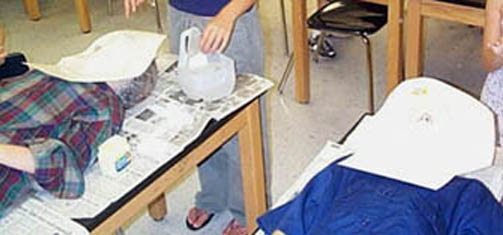
7. Wet strips in water, use fingers to “squeegee” off excess moisture, and apply to side of face and onto poster board border to about 2″ from face.
8. Continue to apply strips of appropriate sizes until entire face is covered with at least two layers of gauze strips. Go far enough onto the poster board to “lock” the face into the “headdress” form.
9. Use tiny strips of gauze on area between nostrils. Be sure to smooth gauze as much as possible to avoid a rough textured surface.
10. Once the strips have been applied, allow the cast to harden for approximately 5-10 minutes. Do not leave student alone during this time, and encourage him or her to relax and stay still. (Surprisingly, I NEVER had an issue with students being uncomfortable with this process. Some found it so relaxing that they fell asleep!)
11. When mask has hardened (it will be warm to the touch), carefully remove it from the student’s face and discard the plastic wrap.
12. After the mask has been removed, have the student use plaster gauze strips to cover the nose on the mask and work to the outer edges of the “headdress.” Wrap about 1/2″ of gauze onto the back of the poster board to ensure that it is locked into place.
13. When mask is completely dry (the next day), have student paint the entire mask with gold acrylic paint. After that has dried, have them paint in the eyes and add other details and decorations to produce an Egyptian-style mummy mask.
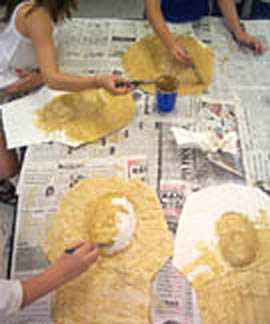
This project took about three days for most of my young students; one day for the casting and two days for the painting. Older students may take longer if they choose to add more details to their masks.
